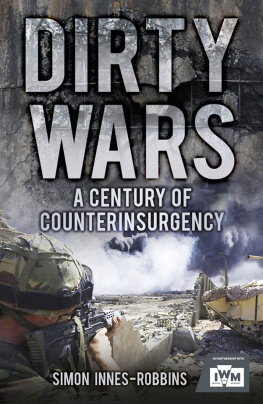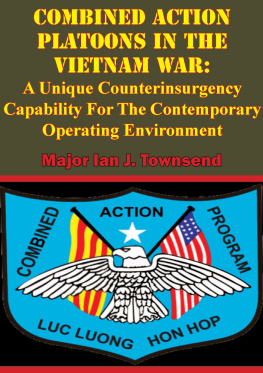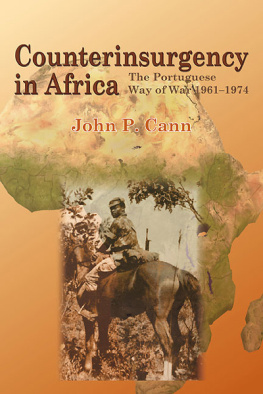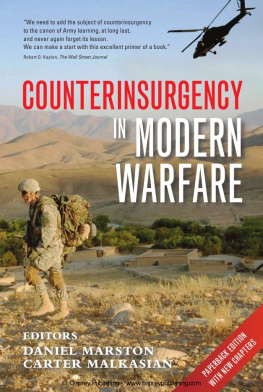RAND C OUNTERINSURGENCY S TUDY V OLUME 1
Byting Back
REGAINING INFORMATION SUPERIORITY
AGAINST 21 ST -CENTURY INSURGENTS
Martin C. Libicki, David C. Gompert,
David R. Frelinger, Raymond Smith
Prepared for the Office of the Secretary of Defense
Approved for public release; distribution unlimited
 NATIONAL DEFENSE RESEARCH INSTITUTE
NATIONAL DEFENSE RESEARCH INSTITUTE
The research described in this report was prepared for the Office of the Secretary of Defense (OSD). The research was conducted in the RAND National Defense Research Institute, a federally funded research and development center sponsored by the OSD, the Joint Staff, the Unified Combatant Commands, the Department of the Navy, the Marine Corps, the defense agencies, and the defense Intelligence Community under Contract W74V8H-06-C-0002.
Library of Congress Cataloging-in-Publication Data is available for this publication.
ISBN 978-0-8330-4189-0
Cover Image by Amir Shah, Courtesy of AP Photo
The RAND Corporation is a nonprofit research organization providing objective analysis and effective solutions that address the challenges facing the public and private sectors around the world. RANDs publications do not necessarily reflect the opinions of its research clients and sponsors.
RAND is a registered trademark.
Cover Design by Stephen Bloodsworth
Copyright 2007 RAND Corporation
All rights reserved. No part of this book may be reproduced in any form by any electronic or mechanical means (including photocopying, recording, or information storage and retrieval) without permission in writing from RAND.
Published 2007 by the RAND Corporation
1776 Main Street, P.O. Box 2138, Santa Monica, CA 90407-2138
1200 South Hayes Street, Arlington, VA 22202-5050
4570 Fifth Avenue, Suite 600, Pittsburgh, PA 15213-2665
RAND URL: http://www.rand.org/
To order RAND documents or to obtain additional information, contact
Distribution Services: Telephone: (310) 451-7002;
Fax: (310) 451-6915; Email:
Preface
A primary output of the RAND Corporations research project for the U.S. Defense Department on how to improve U.S. counterinsurgency capabilities, this monograph should be of interest to the U.S. government and other countries and organizations now rethinking counterinsurgency strategies and retooling counterinsurgency capabilities in view of developments since September 11, 2001. It should also be of interest to scholars trying to understand continuity and change in this field.
The larger RAND project of which this is part will yield a stream of products during its course, culminating in a final monograph that draws on that stream of work. Thus, this particular monograph can and should be read both as an output, in and of itself, and as a piece of a larger picture of RANDs counterinsurgency work.
The topic of this monograph, information capabilities for counterinsurgency, has not been heavily analyzed even though there is a great deal of attention paid to information capabilities for conventional warfare. We argue that the information collection requirements and systems for counterinsurgency matter as much as they do for conventional warfare but that they have to be quite different, for two reasons. First, because the community that conducts counterinsurgency crosses national and institutional boundaries, sharing information across these lines has a greater importance than in conventional warfare; security rules that impede such sharing may have to yield. Second, because the indigenous population plays a much greater role in determining the outcome of an insurgency, collecting information about this population has a far higher priority than it does in conventional warfare in which the enemy is the focus. We then demonstrate what this alternate focus may imply for requirements, collection, networking, and systems design.
This research was sponsored by the U.S. Department of Defense and conducted within the International Security and Defense Policy Center of the RAND National Defense Research Institute, a federally funded research and development center sponsored by the Office of the Secretary of Defense, the Joint Staff, the Unified Combatant Commands, the Department of the Navy, the Marine Corps, the defense agencies, and the defense Intelligence Community.
For more information on RANDs International Security and Defense Policy Center, contact the Director, James Dobbins. He can be reached by email at .
Contents
CHAPTER ONE
Introduction
CHAPTER TWO
The Influence of User Requirements
CHAPTER THREE
The Registry-Census
CHAPTER FOUR
A Well-Wired Country
CHAPTER FIVE
Embedded Video
CHAPTER SIX
A National Wiki
CHAPTER SEVEN
The Principles of ICON
CHAPTER EIGHT
Implications and Implementation
APPENDIX
Disaggregated Information Requirements
Figures
Tables
2.1. Aggregate Assessments of Timeliness, Reliability,
and Security
Summary
Armed conflict has always made serious demands on information, whether it is about the disposition of our own forces or the intentions and status of the adversarys. With the advent of modern information systems, the management of information about friend and foe has become a key determinant of how armed conflict plays out. The Department of Defenses (DoDs) information architecture for conventional warfare reflects that fact.
Counterinsurgency, though, differs from conventional warfare. First, whereas the battles in conventional war are waged between dedicated armed forces, the battles of counterinsurgency are waged for and among the people, the central prize in counterinsurgency. Collecting information about the population is much more important than it is in conventional warfare. Second, the community that conducts counterinsurgency crosses national and institutional boundaries. U.S. and indigenous forces must work together. So, too, must military forces, security forces (notably police), and providers of other government services. Sharing information across these lines, thus, has a greater importance than in conventional warfare.
An integrated counterinsurgency operating network (ICON) should, therefore, be different than that which DoD has built for conventional warfare. In this monograph, we outline the principles and salient features of ICON.
Information Requirements
If winning war requires understanding the terrain, winning counterinsurgency requires understanding the human terrain: the population, from its top-level political structure to the individual citizen. A thorough and current understanding of individuals and their community can help rally support of the government by allowing the government to meet the needs of the local population. Because insurgents do not identify themselves as such on sight, knowledge at the individual level is often what it takes to make such necessary distinctions.
Even the information required for military operations point to the importance of knowing the community. Relying on relevant operating experience, we generated a list of 160 indicative information requirements. To begin, these can be classified by how they are best satisfied: (1) by intelligence operatives, (2) by operators on patrol, or (3) from the population directly. The results are revealing: only 13 require intelligence operatives; 90 can most naturally be supplied by operators; and 57 come from the population. We also assessed the relative importance of ensuring that the information to satisfy these requirements be of high reliability, delivered in a timely manner, and appropriately secured. In this assessment, reliability was the most critical of the three. Usually, the information to satisfy these requirements had to be either highly reliable or at least vetted by experts. By contrast, security tended to be the least stringent desideratum. Only 2 requirements were of the sort that could not be shared with indigenous forces, while 28 could be shared with anyone.








 NATIONAL DEFENSE RESEARCH INSTITUTE
NATIONAL DEFENSE RESEARCH INSTITUTE